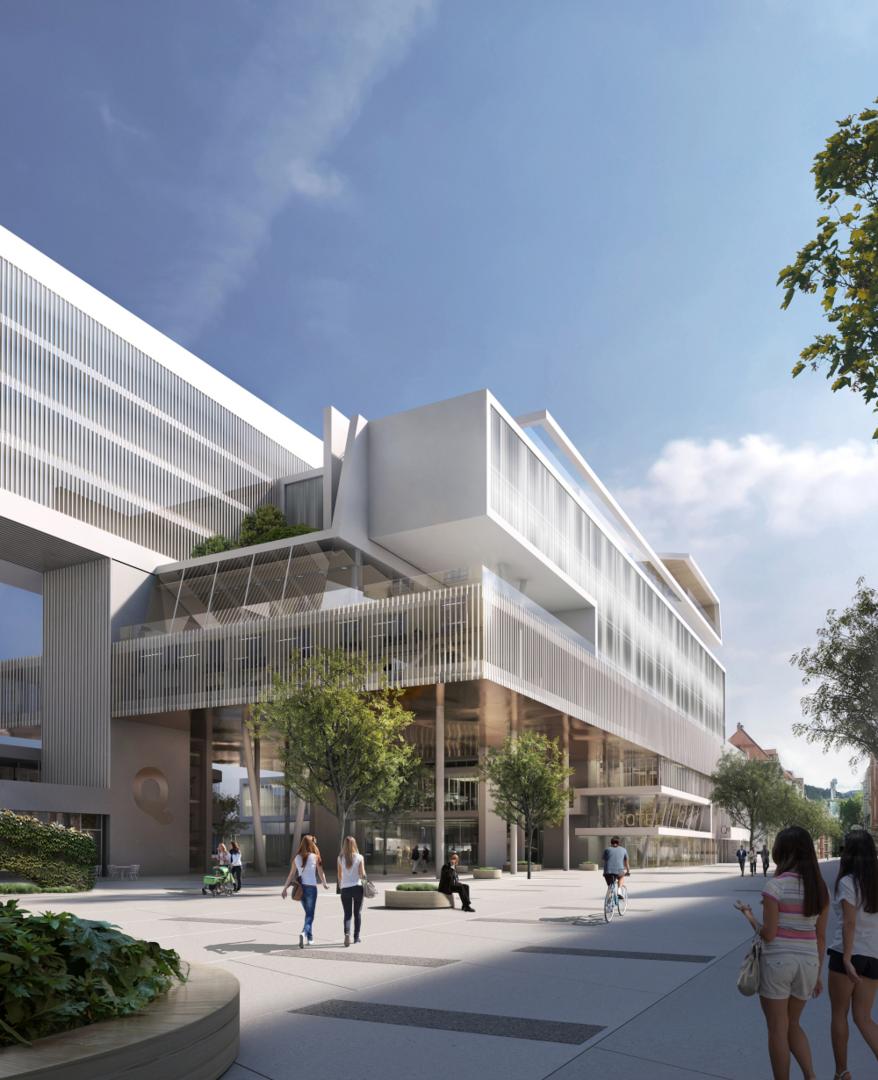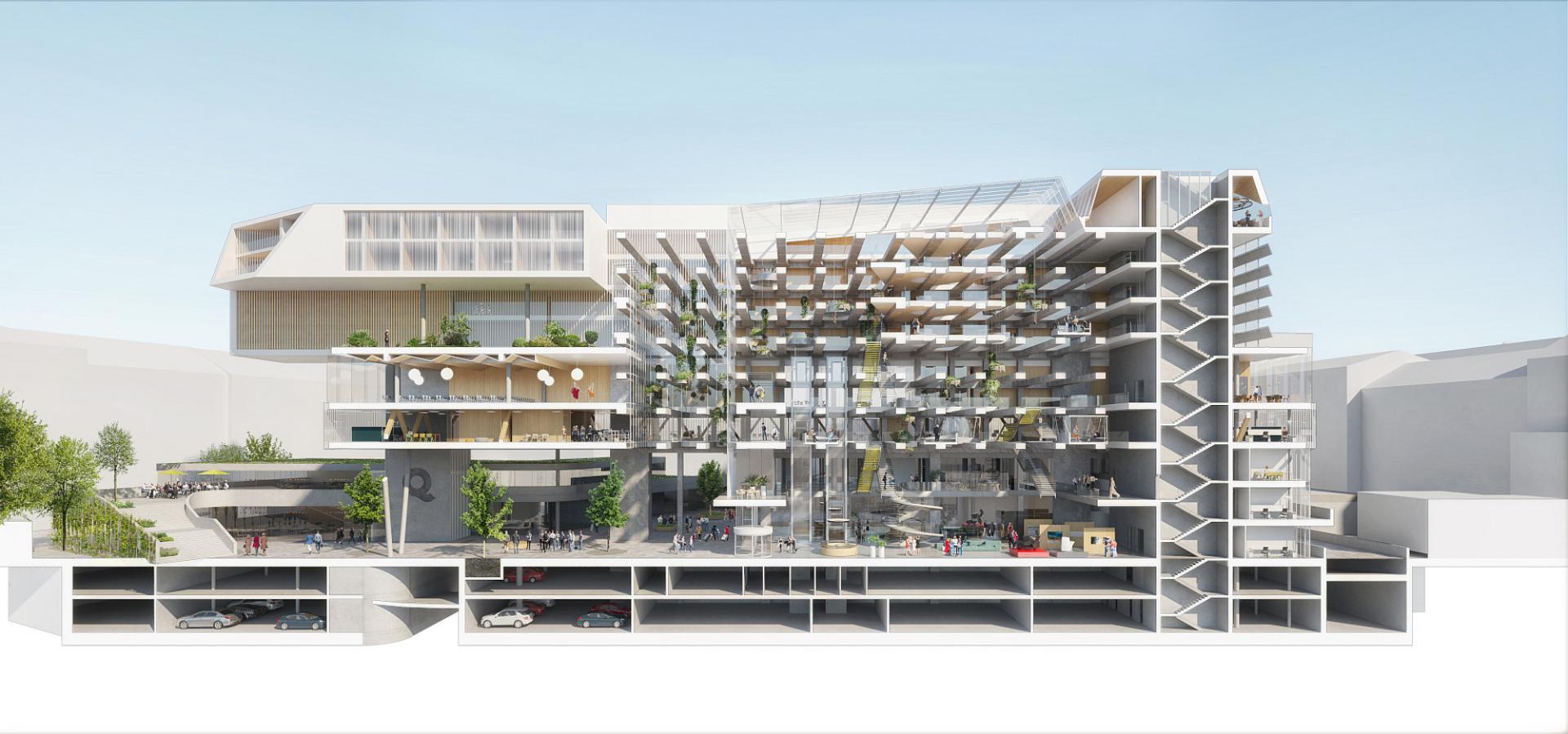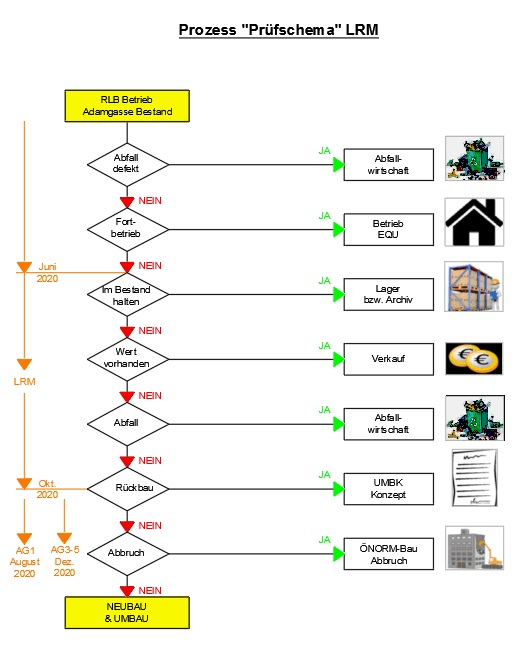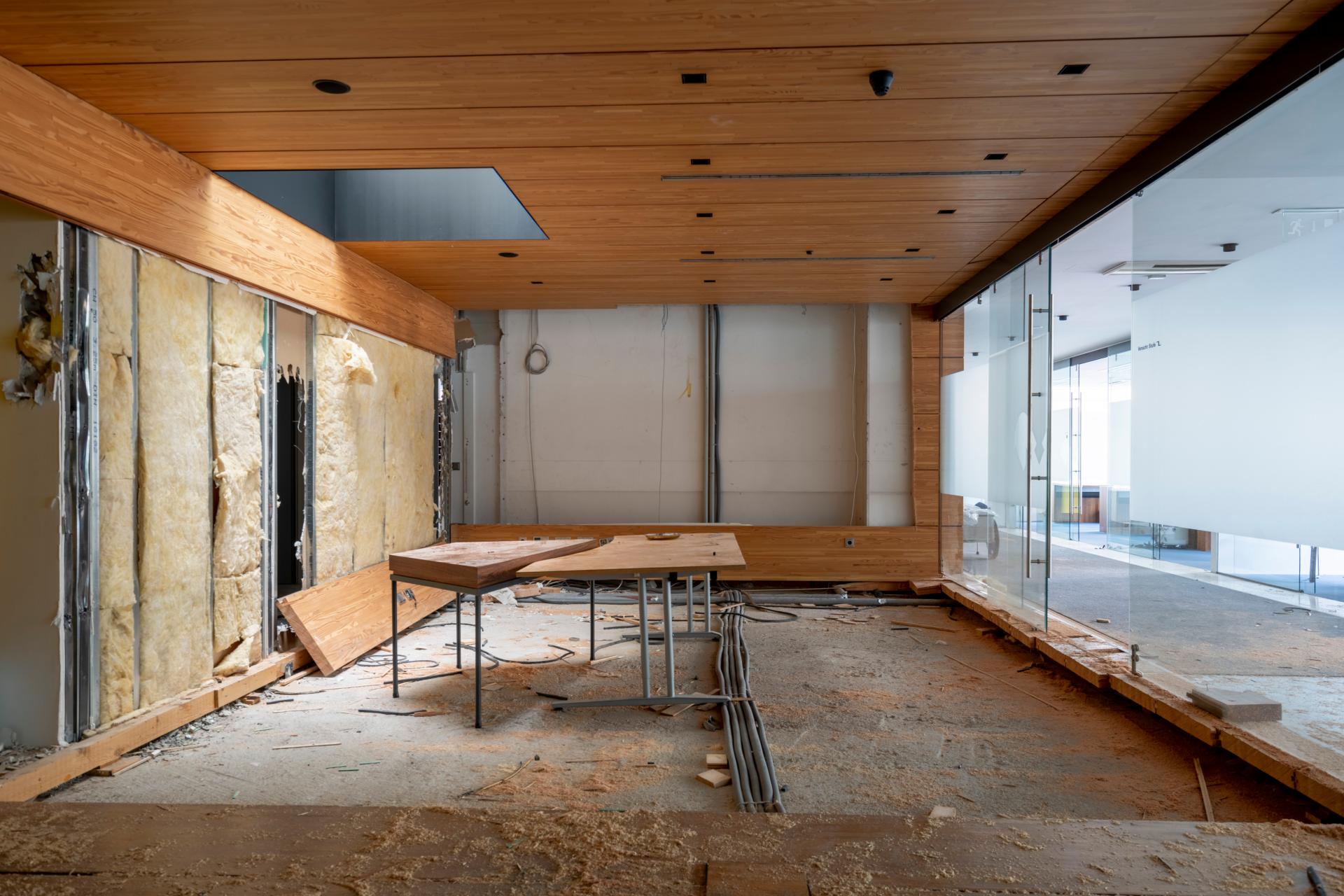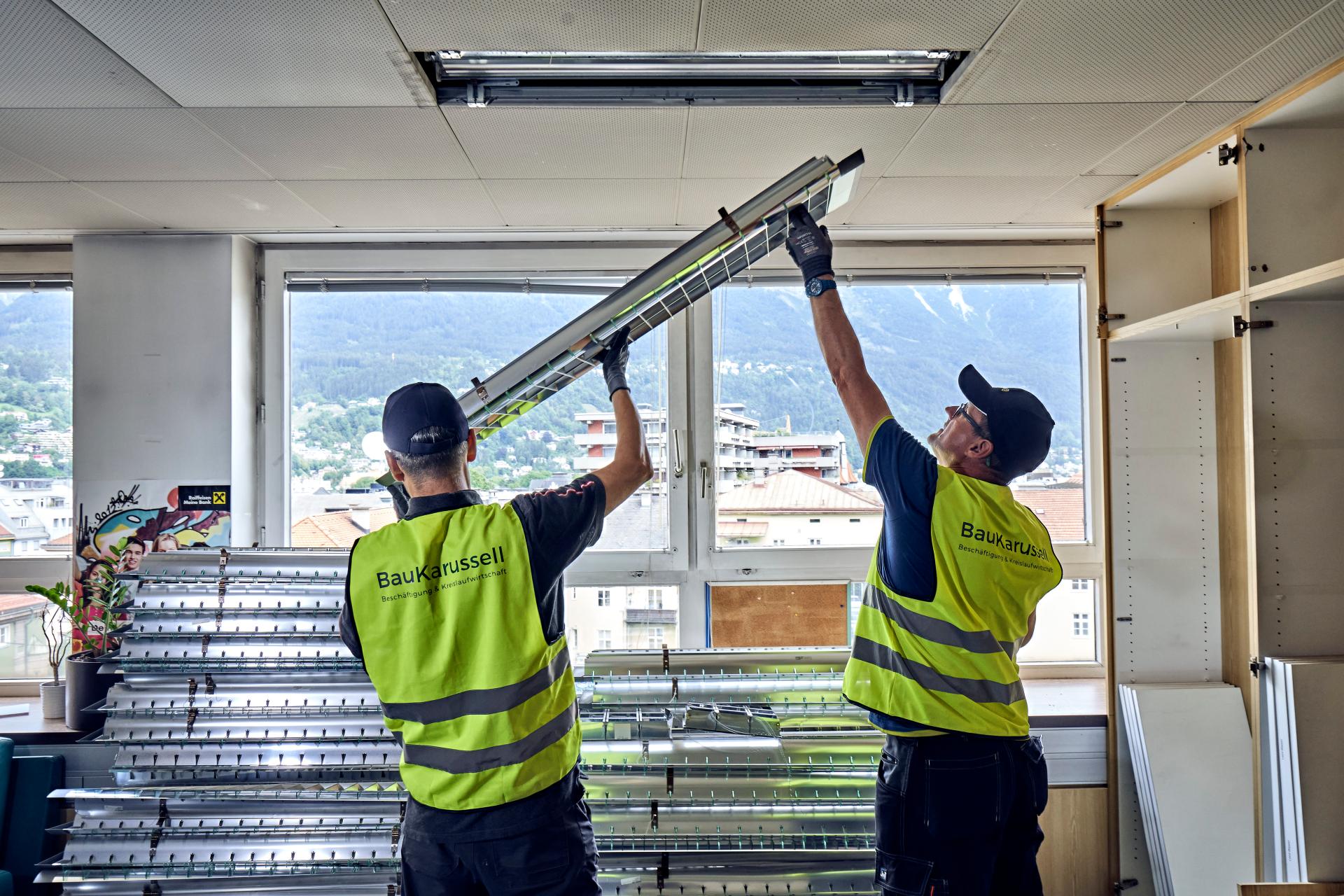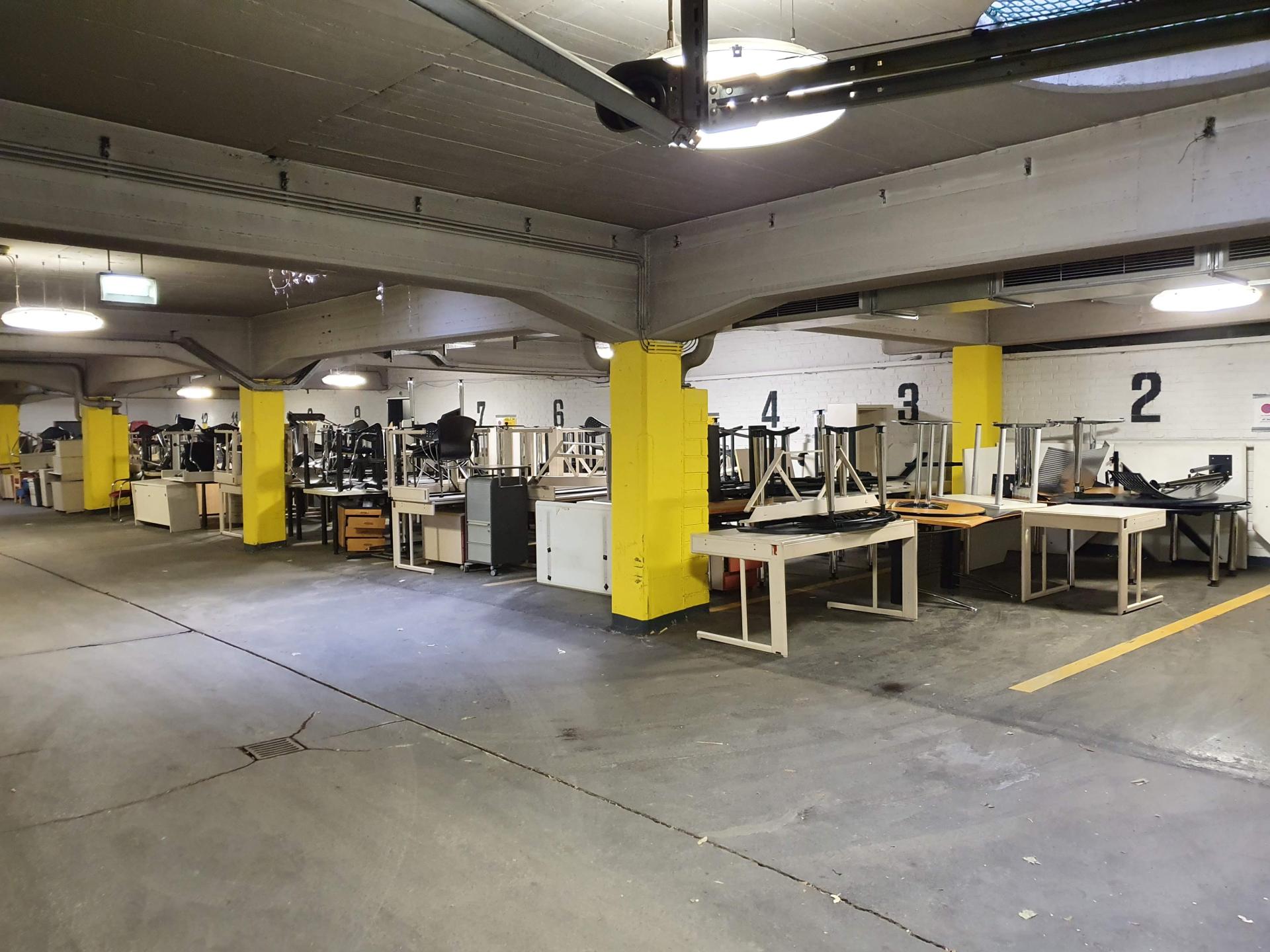Social Urban Mining - Das Raiqa
Basic information
Project Title
Full project title
Category
Project Description
The new headquarters of the Raiffeisen-Landesbank Tirol AG "DAS RAIQA" planned to be finished in 2024 is one of the biggest building projects in Innsbruck in recent years. Not only are we trying to build a building of the future but we also want the way to reach this goal to be sustainable. Therefore, we derived the Project "Social Urban Mining in DAS RAIQA", implementing the spirit of circularity in the built environment by reducing waste, increasing recycling and re-using gathered materials.
Project Region
EU Programme or fund
Description of the project
Summary
The new headquarters of the Raiffeisen-Landesbank Tirol AG "DAS RAIQA", planned to be finished in 2024, is one of the biggest building projects in Innsbruck in recent years. Not only are we trying to construct a building of the future but we also want the way to reach this goal to be sustainable. Therefore, we derived the Project "Social Urban Mining in DAS RAIQA". Urban Mining is the process of gathering, using and recycling resources of an urban mine (e.g demolition building). The Social aspect of it is the employment of citizens coming from socially vulnerable groups. This Circular Economy project is the first of its kind in western Austria in such great dimensions. The project is academically accompanied by the research department of Environmental Engineering "Fachgebiet Abfallbehandlung und Ressourcenmanagement" of the University of Innsbruck to analyze the environmental impact and the re-use of the harvested resources. Moreover, we will not fully demolish the building in the general practice but we will re-use the reinforced concrete framework skeleton, thus saving 2.500 m³ of reinforced concrete. (environmental Impact of concrete)
The project took place in the time from August 2020 to March 2021.
The aim of the project was always to implement a Circular Economy approach to build more sustainably, increase the re-use and recycling of resources, while helping people from socially vulnerable groups.
Key objectives for sustainability
The Construction and Demolition sector was responsible for roughly 36% of all the waste generated in the 27 EU-member states in 2019, therefore being the largest waste producing sector in the EU. One reason why Urban Mining is not implemented in more building projects is that sometimes collecting and storing the resources is more expensive than acquiring new ones. Considering the rising costs of construction materials like wood, polystrol, bricks, etc... we are seeing in 2021, one must realize that it becomes increasingly more valuable for companies to "harvest" resources and implementing sustainability in the building process.
Our key objectives have been the elimination of waste, the better recycling of materials and the re-use of resources and furniture achieved through a planned manual dismantlement by people from socially vulnerable groups, therefore helping them to (re-)integrate in the working world.
To reach this goal we had to analyze the existing building (including the used problem substances), devise a plan for the best manual dismantlement and find the right partnerships. Once this was achieved, the social associations could start decluttering the building and store still re-usable furniture and materials.
Hard Facts:
166t of materials were recycled:
- Wood - 80,2% - used for district heating
- Iron and Steel - 14,3% - Recycling 100%
- Aluminum - 0,7% - Recycling 100%
- fluorescent tubes - 0,3% - Recycling 90%
- Construction Waste- 4,2% - partially recycled / landfill Mining
- artificial mineral fibres (AMF's) 0,3% - partially recycled / landfill Mining
- 2.500 m³ of reinforced concrete reused
- 18.000 m² cleared out
- 60 tables and 120 chairs used in the substitute office
- approx, 900 Chairs either pre-recycled sold or re-used
- approx. 800 Doors
Key objectives for aesthetics and quality
Not only are we trying to build sustainably, but we also want the building to be sustainable. Our aim is to eliminate the "grey dullness" of an old office building and make the passage, which is used by up to 10.000 people on their way from the main train station to work or the city centre, greener and more welcoming. The new quarter will contain a lot of wood constructions, open and green outdoor spaces, natural lighting, and air conditioning.
Key objectives for inclusion
All of the manual deconstruction was done in partnership with social associations which provided manual laborers coming from socially vulnerable groups like long-term jobless persons or handicapped people. The social Associations which provided the workforce were namely ISSBA (https://www.issba.at/) and Schindel and Holz (https://www.schindel-holz.com/). The project was very well accepted by the workers as they not only had the chance to work during the Covid-19 pandemic but also had been challenged by a unique project. The desired quality of the manual labor was fully achieved.
Not only, did we promote inclusion through the hiring of socially weaker people, but also through the donation of furniture and other materials to Social Associations like "Die Kulturbäckerei" (https://www.diebaeckerei.at/), "Upcycling Studio" (http://upcycling-studio.com/) or the "Diakonie Flüchtlingsdienst" (https://fluechtlingsdienst.diakonie.at/) which are either dedicated to help socially weak people, or to the better re-use/recycling of materials. For example, "Foodharing Innsbruck", which is fighting the food waste, could re-use many refrigerators. The Diakonie will use the office furniture to host German language classes for refugee women.
Results in relation to category
This project is one of its kind in western Austria. First of all, the "Social Urban Mining" has never been done on a big project like this, where over 50 people worked on the recycling of a whole office building. Usable parts and furniture were sold and given away, ranging from fine wooden tables to tiles from a massive indoor glass-bridge. The dismantling was done by our social partners who not only pre-sorted recyclable materials which increases the price for which they can be sold but also did part of the removal of the problematic substances (AMF's, fluorescent tubes).
Secondly, we can safe 2500 m³ of reinforced concrete solely by re-using the existing reinforced concrete framework. This is also an example for the design-thinking aspect of the circular economy as it was carefully planned what and how to re-use the old structure in the new building.
In relation to the category, we try to fully implement the spirit of circularity in a built environment and try to further increase its publicity by being a role-model and a best practice example for upcoming building projects.
How Citizens benefit
Not only did socially weaker groups work on site manually deconstructing the old building but the new Project itself will be a "Quarter" where people can shop, visit their bank or doctor, bring their children to the kindergarten, meet up, and enjoy culture in the Art-Space.
The citizens were involved in the choosing (via representatives) of the final project as it was an open architectural competition. Citizen could also benefit from the "harvested "materials, mostly furniture, which were sold cheaply or given away for free. The project "DAS RAIQA" is fully supported and always in good company with the local government. We want to build a new, welcoming entry from the Innsbruck Main Station to the historic city. The whole public is benefiting from the newly generated open and public space on private property. As in 2019, 10.000 people used the old passage on a daily basis on their way to work or in to the city center.
The public demand and usage was always a big point in the architectural competition.
Innovative character
This project is the first of its kind in western Austria as there only have been a few similar projects in Vienna executed by BauKarusell. In the beginning, we tried working together, but then it turned out that the co-working would be too difficult due to the pandemic, the lack of their partnerships in western Austria and the distance between Vienna and Innsbruck, therefore we had to develop our strategy, teams, structures and partnerships by ourselves. Nearly every social partner of our new established network was impressed by how much of an old building and its contents could be used for good and appreciated the project.

